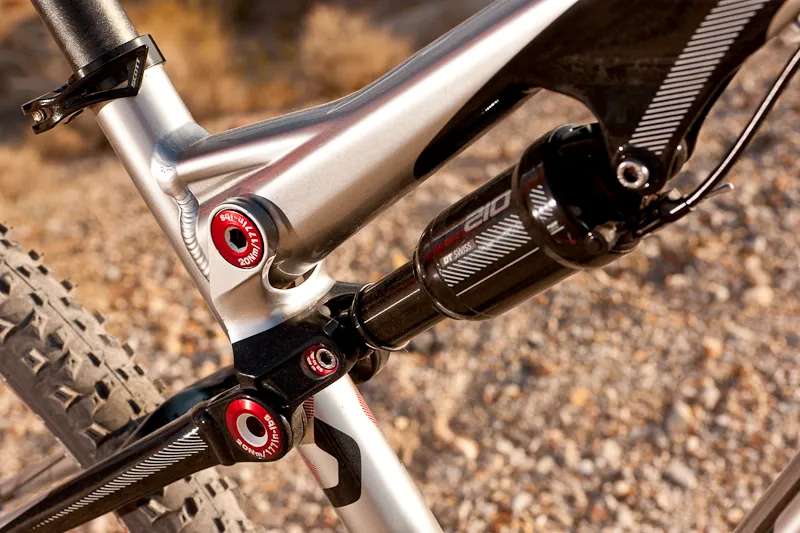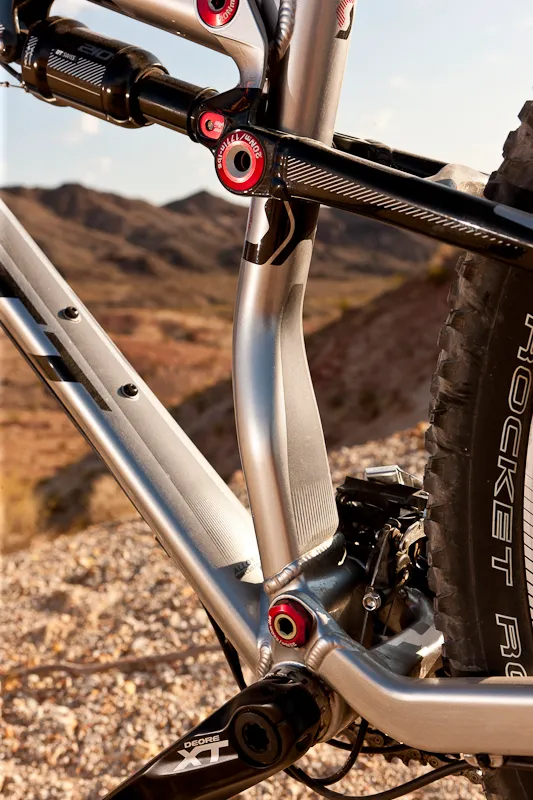While the debate between best wheel size for cross country riding continues to divide families, start small conflicts on marathon start lines and produce some very shaky marketing spiel, Scott have taken the eminently sensible option.
The all new Scott Spark comes in both 26 and 29er sizes. In identical colours. With pretty much identical spec, except of course for bigger wheels and tyres on the 29er and a flat bar to keep hand height similar. Having ridden the alloy versions of both we’re no closer to deciding which format is best though as they're both excellent at what they do.
Dawn rides after a breakfast of cold, semi-vulcanized pizza from the night before the night before aren't the most flattering situation for any bike to start from. Especially if you ride the first mile of rolling singletrack last in a dusty line with most of a slice of that pizza still clenched in your teeth. But the incisive responsiveness of the 26in Spark still shone through the aching legs of the day before and the dangling gag of coagulated cheese.
The geometry flip chip lets you switch between a 70 or 69 degree head angle, but whichever you choose a short stem keeps reactions immediate. Unlike the increasingly fashionable long front centre bikes, the steering of the relatively short Spark all happens right under your nose rather than way out in front. That makes shoving deliberate understeer through corners feel totally natural, rather than trying to catch failing traction at full stretch. Even with a QR fork and rear end - rather than screw thru axles - those responses are very tight and truly communicated too.

Neat wraparound rocker
Larger diameter bearings than previous Scott bikes and a neat wraparound rocker means very little flex in the rear in either format. The DT Swiss 210 shock is equally pert and predictable. It’s not the most supple air can around and the bike isn't going to swallow big square edges without jaw ache but then this is primarily a cross country-fast trail bike. In this context the TwinLoc remote handlebar lockout makes a lot of sense. The alloy Sparks only get a dual mode version with full open and full lockout (carbon bikes get a third intermediate ‘Traction Control’ setting) but the lever is a cinch to use and simultaneous fork and rear shock lockout will be loved by sprinters and road climbers alike.
Considering we’re talking cost conscious alloy Spark 40 versions, complete bike weights are good too, at 26.5lb for the 26 and 27.7lb for the 29er.
Speaking of the 29er, unlike many big wheeled lightweights aimed at XC riders it’s as tight, responsive and agile as the 26 in relative terms. There’s a bit of acceleration and steering stubbornness from the extra wheel inertia, but traction and stability both increase noticeably without an obvious loss of agility or infectious fun in the overall ride.
So far the standout bikes we’ve ridden in the desert, although with a day and a half of demo still to go there are still a lot more options to play on yet.
Unable to load media
Video: Guy Kesteven puts the Scott Spark through its paces








